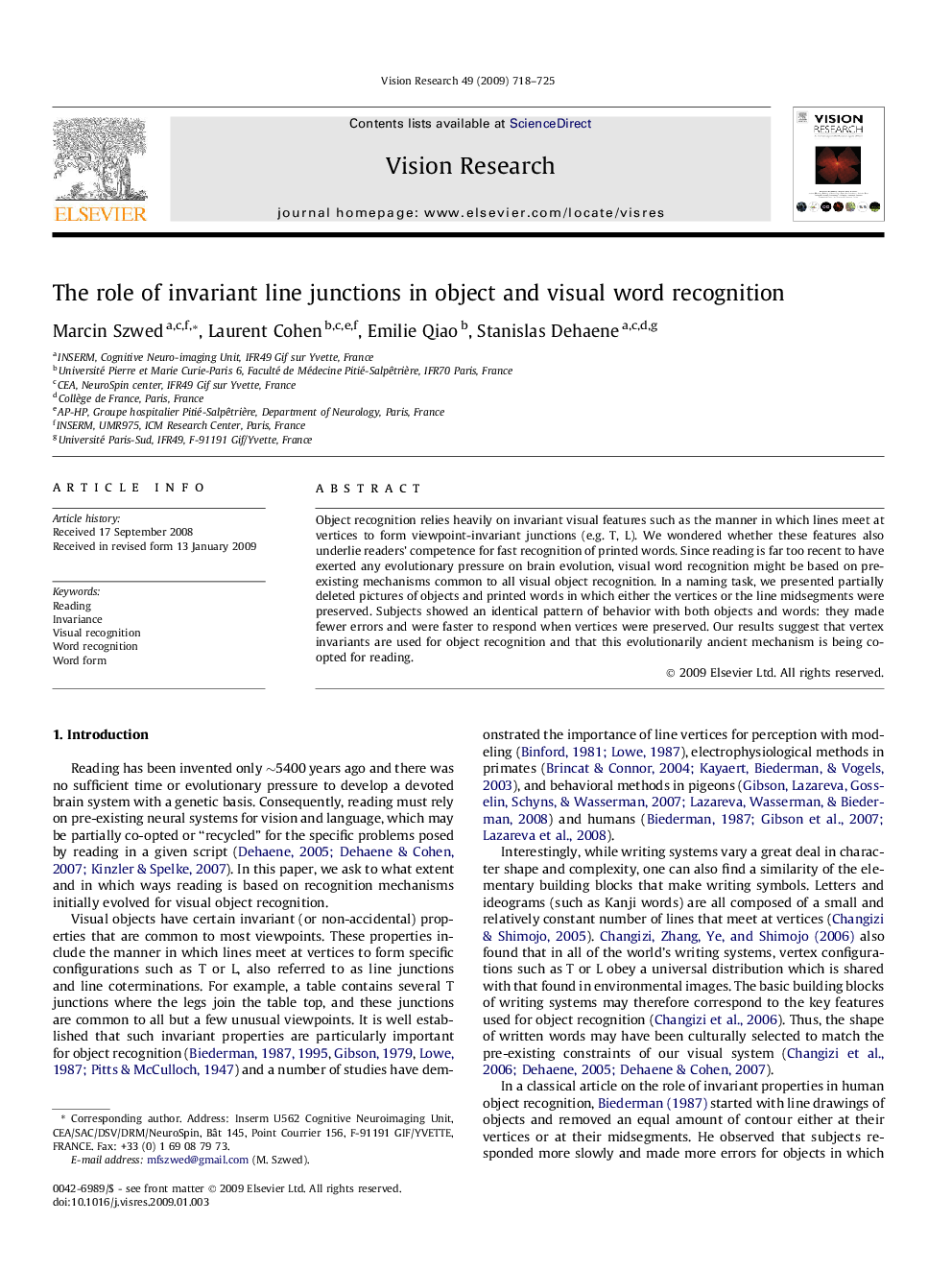| Article ID | Journal | Published Year | Pages | File Type |
|---|---|---|---|---|
| 4034736 | Vision Research | 2009 | 8 Pages |
Object recognition relies heavily on invariant visual features such as the manner in which lines meet at vertices to form viewpoint-invariant junctions (e.g. T, L). We wondered whether these features also underlie readers’ competence for fast recognition of printed words. Since reading is far too recent to have exerted any evolutionary pressure on brain evolution, visual word recognition might be based on pre-existing mechanisms common to all visual object recognition. In a naming task, we presented partially deleted pictures of objects and printed words in which either the vertices or the line midsegments were preserved. Subjects showed an identical pattern of behavior with both objects and words: they made fewer errors and were faster to respond when vertices were preserved. Our results suggest that vertex invariants are used for object recognition and that this evolutionarily ancient mechanism is being co-opted for reading.
